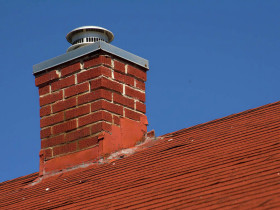Schedule Your Chimney’s Waterproofing
Spring can bring a lot of wet weather to the Indianapolis area, and wet weather can definitely cause trouble for your masonry chimney. To protect your chimney and your home from water damages, the most protective measure is to have it waterproofed by a professional.
How water damages your masonry chimney
Masonry materials — such as bricks, natural stone and rocks, as well as the mortar that holds them together — are porous by nature. That means they absorb and retain water. Over time, that water causes damage, either by weakening the masonry or by freezing and expanding when temperatures change. When your chimney is waterlogged, cracks that let water into your home or your chimney’s interior can form, or the entire chimney structure can weaken to the point where it could become dangerous and unstable. You can prevent this by chimney waterproofing.
How chimney waterproofing protects your chimney
Chimney waterproofing solutions, such as industry leader ChimneySaver Solutions, protect your chimney’s masonry by preventing your chimney’s masonry from absorbing water. These solutions prevent nearly 100 percent of water from entering your chimney’s masonry while still allowing your chimney to breath. That means your chimney is protected from water while still being able to exhaust gas, moisture and other byproducts from your fireplace or heating stove. Waterproofing solutions are so successful that the Chimney Safety Institute of America recommends chimney waterproofing as a primary way to protect your chimney from water damage.
Why you should waterproof your chimney in the spring
While waterproofing your chimney will provide an added layer of protection any time of year, spring is the perfect time. In part – because there are a lot of wet weather – and waterproofing your chimney now will save it from all the rain, sleet and late-season snow. Waterproofing your chimney in the spring also means that your chimney’s masonry won’t absorb moisture all spring and summer, this will give the masonry the chance to dry out on hot summer days, so your chimney won’t be filled with water that will freeze and expand later on, which might destroy your chimney’s masonry when cold weather hits.
If you’re ready to protect your chimney’s masonry from water damage, call Your Chimney Sweep to schedule an appointment today! We’ll apply the ChimneySaver waterproofing solution for your chimney, and we’ll inspect your chimney to ensure there were no prior water damage that could allow for more serious issues or jeopardizes your chimney’s structure or function.

